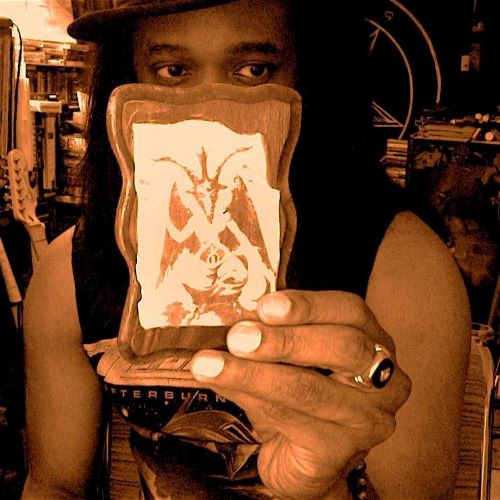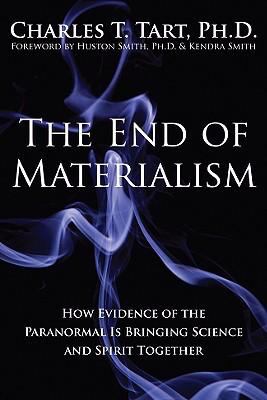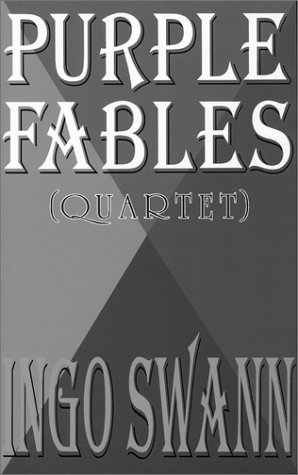

Recommended Reading List 2

Can yoga and meditation unleash our inherent supernormal mental powers, such as telepathy, clairvoyance, and precognition? Is it really possible to perceive another person's thoughts and intentions? Influence objects with our minds? Envision future events? And is it possible that some of the superpowers described in ancient legends, science fiction, and comic books are actually real, and patiently waiting for us behind the scenes? Are we now poised for an evolutionary trigger to pull the switch and release our full potentials? Dean Radin, Director of Research at the Institute of Noetic Sciences (IONS) and bestselling author of The Conscious Universe, presents persuasive new experimental evidence for the existence of such phenomena. He takes us on a thrilling scientific journey and challenges outdated assumptions that these abilities are mere superstitions. Focusing on Patanjali's mysterious Yoga Sutras -- 2,000-year-old meditation practices believed to release our extraordinary powers -- Radin offers powerful evidence confirming that sometimes fact is many strangers, spookier, and more wonderful than the wildest fiction.

Explore new worlds without booking a flight! In Adventures Beyond the Body, William Buhlman recounts his fascinating experiences with astral travel, connects this phenomenon with current cosmological theories, and suggests that we all have the capability to travel to parallel universes. Don't worry about getting lost--Adventures is filled with well-mapped methods for finding your way out of your body and into other worlds. Control is Buhlman's mantra, specifical control over our fear of the unknown. He precisely addresses the common events that can occur during an out-of-body experience, taking the fear out of the journey, and allowing you to focus on living the adventure. -Brian Patterson
"An intriguing guidebook for those who want to venture beyond the horizon of ordinary reality." -Raymond Moody, author of Life After Life

This is a basic book on Astral traveling. Robert has refined his teaching of out-of-body experiences by helping people learn over the web for almost a decade. The book is original and the material is thought-provoking. What I liked was that Robert stated how easy it is for anyone to soul travel and remember it. I have had personal experiences with out-of-body experiences but personally felt they were something that rarely happen for me. So I have been reading this book each night before I go to sleep and practicing the exercises. Last night I flew out of my bedroom, around my farm, and to the tops of my neighbor's tall poplar trees. The colors were beyond the normal spectrum of intensity and it was night time. I then crashed into a tree and instantly jumped up in bed with a vivid memory. I believe this book is revolutionary. I think the techniques of seeing smoke rings raise up your body, relaxing it, and the image of pulling your inner body out with a spirit rope as you fall asleep are effective techniques. -- Michael Peter Langevin Magical Blend--#68

How do we know the spiritual is real? -- Ways of not knowing: distortions of science and intelligence -- Starting from the natural world: a psychic coup d'État? -- Extended aspects of mind: the big five -- Telepathy -- Clairvoyance, or remote viewing -- Precognition -- Psychokinesis -- Psychic healing: PK on biological systems? -- Postcognition and extended aspects of mind: the many maybes -- Out-of-the-body experiences -- Near-death experiences -- Postmortem survival: after-death communications -- Mediumship: an experimental approach to postmortem survival -- Reincarnation -- So what have we learned? -- If I believed the western creed -- Bringing it all back home: personal reflections -- Returning to mystical experience The author reconciles the scientific and spiritual worlds by looking at empirical evidence for the existence of paranormal phenomena that points toward our spiritual nature, including telepathy, clairvoyance, precognition, psychokinesis, and psychic healing.

A parapsychological study of the meaningful coincidence of events, extrasensory perception, and similar phenomena. This is a work that explores the parapsychological aspects of coincidence and ESP and how they are manifested in our lives.

From Publishers Weekly
Extending the line of thought propounded in his Dogs That Know When Their Owners Are Coming Home, Sheldrake continues his investigations of perceptions that don't seem to correlate to our known senses. It's a project that carries risks of which he is well aware ("to go against this taboo involves a serious loss of intellectual standing, a relegation to the ranks of the uneducated"), and is careful to base his arguments on sustained research. Using a database of more than 4,500 case histories of "apparently unexplained perceptiveness by people and by nonhuman animals," Sheldrake investigates a wide range of psychic phenomena, organizing his inquiries by specific media. One chapter covers "Telephone Telepathy," whereby one can be thinking of a person who then calls or can "actively induce" someone to call.
He also covers cats who rush to the phone when it is their owner on the line, but of particular interest are the studies and anecdotes presenting evidence of other sorts of telepathic or psychic communication between children and parents, as well as the tales of dreams and visions that seem to have predicted the tragic events of September 11. Some of the material fails to convince (such as the woman who says her husband can sense the correct Trivial Pursuit answer if she thinks about it), and some readers may wish that Sheldrake had more fully dealt with selective memory and retrospective narration where details are unconsciously embellished. Nevertheless, the title chapter is extremely convincing, dealing with those moments in which we "know" someone is looking at us, and turn around to find it to be so: Sheldrake has data on response rates that differ as to place, gender and type of gaze (curiosity, sexual desire, anger, etc.), and goes on to devote a whole chapter to "Surveillance and Wariness."

Corvis Nocturnum, author of the well-received Embracing the Darkness; Understanding Dark Subcultures brings you his personal collection of essays penned from years of observing his fellow man. Few authors since Nietzsche or LaVey have so vehemently rallied against societal, religious and governmental hypocrisies, laughable shortcomings, and failings. Sharply critical of apathetic bottom feeders and thoughtfully introspective, Corvis forces us to look at the creature that stares back at us from the abyss.

The immortal Count Dracula--Bram Stoker portrayed him as a terrifying creature of the night, preying upon the pure and innocent. The truth is far different. For Dracula is no villain, but a noble, powerful tower of strength. And it is those who hunt him who are the true villains!

Dracula is an 1897 novel by Irish author Bram Stoker, featuring as its primary antagonist the vampire Count Dracula.
Dracula has been attributed to many literary genres including vampire literature, horror fiction, the Gothic novel, and invasion literature. Structurally it is an epistolary novel, that is, told as a series of letters, diary entries, ships' logs, etc. Literary critics have examined many themes in the novel, such as the role of women in Victorian culture, conventional and conservative sexuality, immigration, colonialism, post-colonialism and folklore. Although Stoker did not invent the vampire, the novel's influence on the popularity of vampires has been singularly responsible for many theatrical, film and television interpretations throughout the 20th and 21st centuries.
In the past 31 years, there has been a lot of ink - actual and virtual - spilled on the subject of the Necronomicon. Some have derided it as a clumsy hoax; others have praised it as a powerful grimoire. As the decades have passed, more information has come to light both on the book's origins and discovery and on the information contained within its pages. The Necronomicon has been found to contain formula for spiritual trans-formation, consistent with some of the most ancient mystical processes in the world, processes that were not public knowledge when the book was first published, processes that involve communion with the stars.
Simon the author has been a student of magic, occultism, and religion since the mid-1960s and the editor of the Necronomicon, Simon was a frequent lecturer for the famed Warlock Shop in Brooklyn and the Magickal Childe Bookstore in Manhattan for more than ten years before his sudden disappearance in 1984, speaking on topics as diverse as religion and politics, occultism and fascism, ceremonial magic, demonolatry, the Tarot, the Qabala, and Asian occult systems. He also conducted private classes for the New York City OTO during this period, with a focus on Enochian magic, "Owandering bishops," and Afro-Caribbean occult beliefs. An ordained priest of an Eastern Orthodox church, Simon has appeared on television and radio discussing such topics as exorcism, satanism, and Nazism. The media events he organized in the 1970s and 1980s -- with rock bands, ritual performances, and celebrity appearances -- helped to promote the "occult renaissance" in New York City. After decades of study in European, Asian, and Latin American cult centers, this book marks his first public appearance in more than twenty years.

H.R. GIGER'S NECRONOMICON: A startling milestone on the darkly lit road once traveled by the likes of Bosch, Brueghel, Lovecraft, Poe and Kafka. Giger's remarkable book of the dead gives us some of the most powerful images ever an artist drew from the well of the imagination.

This is Giger's second Necronomicon, and if you enjoyed the first book I assure you that you will enjoy this one as well. Prepare to enter the netherworld of Giger's rich imagination. You will lock eyes with the milky orbs of the undead, scan the erupting postulant landscapes and gaze upon the bizarre anatomy of his painted offspring---his alien creatures synthesized in a fusion of elegance and grotesquerie--all birthed from the synaptic channel that leads from the depths of the human subconscious to flow out through the brush hand, wielded with such amazing delicacy and precision.

Aradia or the Gospel of the Witches is an 1899 book by Charles Godfrey Leland. The book is an attempt to portray the beliefs and rituals of an underground religious witchcraft tradition in Tuscany that, Leland claimed, had survived for centuries until his discovery of its existence in the 1890s. Scholars have disputed the veracity of this claim. Still, the book has become one of the foundational texts of the Neopagan witchcraft movements Wicca and Stregheria.
The text is a composite. Some of it is Leland's translation into English of an original Italian manuscript, the Vangelo (gospel). Leland reported receiving the manuscript from his primary informant on Italian witchcraft beliefs, a woman Leland referred to as "Maddalena" and whom he called his "witch informant" in Italy. The rest of the material comes from Leland's research on Italian folklore and traditions, including other related material from Maddalena. Leland had been informed of the Vangelo's existence in 1886, but it took Maddalena eleven years to provide him with a copy. After translating and editing the material, it took another two years for the book to be published. Its fifteen chapters portray the origins, beliefs, rituals and spells of an Italian pagan witchcraft tradition. The central figure of that religion is the goddess Aradia, who came to Earth to teach the practice of witchcraft to peasants in order for them to oppose their feudal oppressors and the Catholic Church.
Leland's work remained obscure until the 1950s, when other theories about, and claims of, "pagan witchcraft" survivals began to be widely discussed. Aradia began to be examined within the wider context of such claims. Scholars are divided, with some dismissing Leland's assertion regarding the origins of the manuscript, and others arguing for its authenticity as a unique documentation of folk beliefs. Along with increased scholarly attention, Aradia came to play a special role in the history of Gardnerian Wicca and its offshoots, being used as evidence that pagan witchcraft survivals existed in Europe, and because a passage from the book's first chapter was used as a part of the religion's liturgy. After the increase in interest in the text, it became widely available through numerous reprints from a variety of publishers, including a 1999 critical edition with a new translation by Mario and Dina Pazzaglini.

The concept of 'Archetypes' and the hypothesis of 'A Collective Unconscious' are two of Jung's better-known and most exciting ideas. In this volume - taken from The Collected Works and appearing in paperback for the first time - Jung describes and elaborates the two concepts.
Three essays establish the theoretical basis which is then followed by essays on specific archetypes. The relation of these to the process of individuation is examined in the last section. The Archetypes and the Collective Unconscious is one of Jung's central works.

From Publishers Weekly: McTaggart, an investigative journalist (What Doctors Don't Tell You), describes scientific discoveries that she believes point to a unifying concept of the universe, one that reconciles mind with matter, classic Newtonian science with quantum physics, and, most importantly, science with religion. At issue is the zero-point field, the so-called "dead space" of microscopic vibrations in outer space as well as within and between physical objects on earth. These fields, McTaggart asserts, are a "cobweb of energy exchange" that links everything in the universe; they control everything from cellular communication to the workings of the mind, and they could be harnessed for unlimited propulsion fuel, levitation, ESP, spiritual healing and more. Physicists have been aware of the likelihood of this field for years, McTaggart writes, but, constrained by orthodoxy, they have ignored its effects, which she likens to "subtracting out God" from their equations. But, McTaggart asserts, "tiny pockets of quiet rebellion" against scientific convention are emerging, led by Ed Mitchell, an Apollo 14 astronaut and founder of the Institute for Noetic Sciences, an alternative-science think tank. McTaggart writes well and tells a good story, but the supporting data here is somewhat sketchy. Until it materializes, McTaggart may have to settle for being a voice in the wilderness.
Copyright 2002 Cahners Business Information, Inc.

Mr. Monroe has set down and explained - and explained - some of his out-of-the-body experiences here which are variously called OOBEs, Second Body or Second State, or his "wild talent." He's been making these paranormal excursions here and there and up to Locales I and II for twelve years; no one has been able to give him much help so he has developed a whole scientific construct around them which involves a lot of extrapolation; he's about to start a Mind Research Institute. Among the more striking astral projections are those dealing with people who are dying or have just died (a doctor he knew, a young boy he didn't know); then there's the plane crash vision that preceded his medically unexpected heart attack.
He follows up on each and every episode, tries to affirm how his Second Body looks, and one witness, a R.W. he incorporeally dropped in on, confirmed that he was a "filmy piece of grey chiffon." He attests to ongoing sexuality in the Second State which may be heartening: "In an immediate moment, there is a mind (soul?) shaking interflow of electrons one to the other, unbalanced charges become equalized, peaceful contended balance is restored, and each is revitalized."(Kirkus Reviews)

Product Description: It is only natural that rock and roll is "the devil's music" � and Satanism should be intimately linked. Lucifer Rising explores this unique cultural confluence. Divided into three parts, the book first traces the history of Satanism, from the birth of the Black Mass through the fashionable sinners of the Hellfire Club. The second section examines Satanism in the 20th century, including Aleister Crowley, the formation of the Church of Satan, the Manson Family, and the rise of occult-influenced bands like Black Sabbath and Led Zeppelin. The book�s third part looks at the new waves of Thrash Metal, Death Metal, and the Scandinavian Black Metal scene; the murder case surrounding the band Burzum; the neo-Nazi element; and the religious rights courtroom pursuit of heavy metal. Lavishly illustrated throughout with graphics, medieval woodcarvings, and stunning photographs, the book also contains an entertainingly cynical comment from Anton LaVey, in one of his last in-depth interviews

Publisher's Note: Described as parapsychology's most famous test subject, Ingo Swarm is a talented author of both fiction and non-fiction. This quartet of moving and poignant fables impart gentle wisdom to the reader whose heart is open.
This book is a compilation of myths, poems, and writings that have inspired or given voice to the story of Satan, from a Satanic perspective, as a single cohesive source of linear storytelling.
